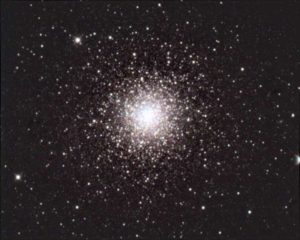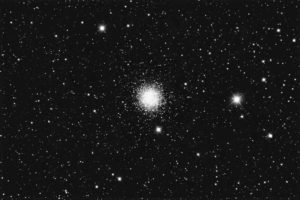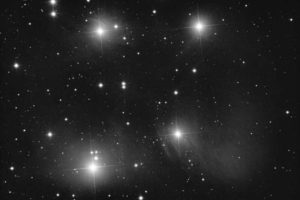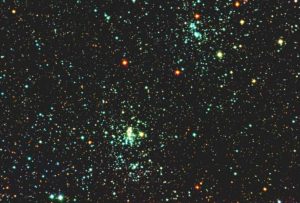M3
Messier 3 (M3 or NGC 5272) is a globular cluster of stars in the northern constellation of Canes Venatici. It was discovered on May 3, 1764,[8] and was the first Messier object to be discovered by Charles Messier himself.
This cluster is one of the largest and brightest, and is made up of around 500,000 stars. It is estimated to be 11.4 billion years old. It is located at a distance of about 33,900 light-years away from Earth.
Messier 3 is located 31.6 kly above the Galactic plane and roughly
38.8 kly from the center of the Milky Way. It contains 274 known variable stars; by far the highest number found in any globular cluster.
It is 18 minutes of arc in diameter.
Settings
Date: 27-03-20
Camera: SX H694
L 10s x 5 (2×2). RGB 10s x 2 (2×2)
L 30s x 5 (2×2). RGB 30s x 2 (2×2)
L 300s x 5 (2×2). RGB 300s x 2 (2×2)
Used three images to layer mask
M15
Messier 15 is a globular cluster in the constellation Pegasus. At an estimated 12.0 billion years old, it is one of the oldest known globular clusters.
M 15 is about 33,600 light-years from Earth, and 175 light-years in diameter. It has a total luminosity of 360,000 times that of the Sun. Messier 15 is one of the most densely packed globulars known in the Milky Way galaxy. Its core has undergone a contraction known as “core collapse” and it has a central density cusp with an enormous number of stars surrounding what may be a central black hole.
It is 18 arc minutes in diameter, but has a clearer “edge” than M3.
Settings
Date: 20-01-20
Camera Trius Pro 35
L 300s x 16 (1×1). Black and white image as trial for new camera. It takes a larger are of sky but effectively the same resolution as the H694.
M45 – The Pleiades
The “seven sisters” is an open star cluster in the constellation of Taurus. Of the stars six are visible to the naked eye on a good night. The stars are hot and blue and relection nebulae are seen around the brightest. They are 444 ly away on average.
The one luminance frame taken does indicate that the exposure is about right, but more images are needed for stacking as well as the RGB. It also shows that a mosaic of two images will be needed to get the whole of the Pleiades into the final image.
Settings
Date: 14-12-20
Camera Trius Pro 35
L 200s x 1 (1×1). The cloud intervened after the first luminance image.
M45 – The Pleiades – Mosaic
The mosaic had to be 4 frames because of the orientation of the camera. Did not want to change this as flats taken earlier in the day. The whole process took 48 frames but it seems that better noise reduction could use more – but the noise was much improved used the better darks and flats – see below.
The images were processed using improved darks and flats. Masters were made with 20 frames for each one. The darks were obtained with a variety of exposures so could be reused at other times. The flats used an even cloudy sky with a mask of 5 sheets of high quality tracing paper. These were taken for each filter. Dark flats of the same exposure were also taken. As the dark exposure matched the lights there was no need for a bias – if used it subracts twice and wrecks the image.
Settings
Date: 16-12-20 and 19-12-20
Camera Trius Pro 35
Mosaic of 4 images each:
L 200s x 3 (1×1). RGB 200s x 3 (1×1)16
NGC 869-884 Double cluster in Perseus
The moon was near full so this made a more sensible target as there could be many short exposures.
The images were processed in Pixinsght. This makes it much easier when there are 2×2 bin for colour and 1×1 for luminance. Also the colour range is easier to achieve although this may also be due to the new Astronomix filters.
Settings
Date: 28-02-21
Camera Trius Pro 35
L 60s x 45 (1×1). RGB 30s x 45 (2×2)




